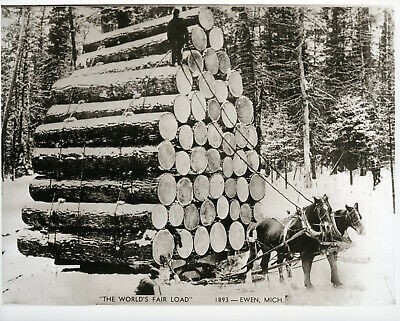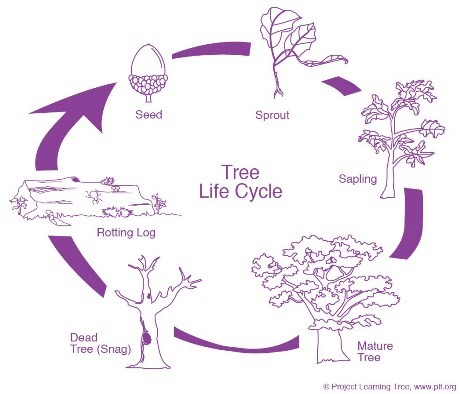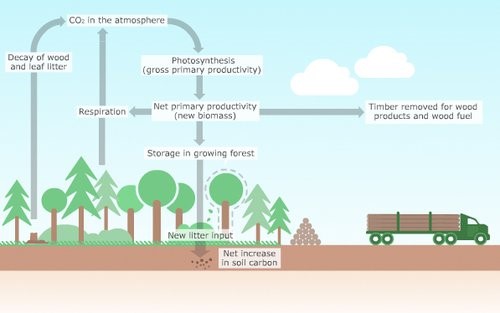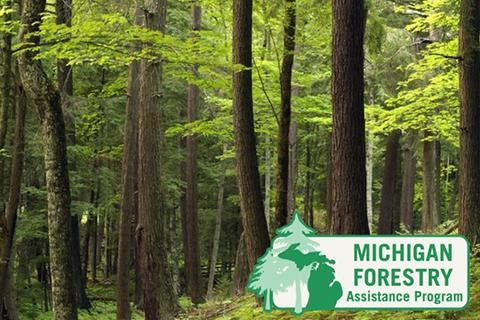My name is Dylan Parker; I am the district forester for the Chippewa Luce Mackinac Conservation District. Some of you already know me and may have had me out to look at your forest land. If you have, you already know that my primary role for the district is to provide education on forestry and provide free and unbiased information on your property as well as the various other natural resources that our area has to offer. If you haven’t already, and you are looking for a professional opinion on your property consider contacting the local conservation district even if it’s not forest related someone will be happy to point you in the right direction.
I am provided a role as forester to the district through the Forestry Assistance Program put on through the state of Michigan. I am a resource to anyone in Chippewa Luce and Mackinac counties. As the forester I am an expert on forest management. This also includes those smaller parcels and backyard forests as well. If you are looking for guidance I am happy to help. I can also connect you with another professional that will do more specific tasks such as a consulting forester or industry professional that can also help to get you the right tools and knowledge to achieve your goals.
My job is to promote forestry in the east U.P. This is a vital part of our economy and provides many families with work. This is an industry that has been prevalent in Michigan since before our states founding in 1837. We have all heard the stories about how Michigan’s White pines were harvested to rebuild the City of Chicago. But Michigan wood has been used in many other cities as well as even to create things that most wouldn’t even think of. Following the white pine boom in Michigan was the demand for another tree, the Eastern Hemlock. This tree was cut for its bark that is high in tannins and in the day was used for tanning furs.
This industry was not necessarily eco-friendly as we have mostly all heard of the tannery in the soo that operated from 1900 to 1958 and left contaminants in the St. Marys that will forever be a part of the ecosystem in that area. It contaminated the St. Mary’s River with heavy metals, including chromium, lead, cadmium, arsenic and mercury.
At the same time period, technology began to evolve in the area the demand for charcoal began to grow to fuel the industry. This industry consisted of mainly rail and the manufacture of Iron ore to iron. Much of this ore came from Michigan as well. The Demand for Charcoal created a demand for hardwood. Removing the Pines for building and the Hemlock for tanning, only left the hardwoods remaining. These soon became fuel for the booming industry that ran on wood.

As you can Imagine this was not a good time to be a tree or anything that depended of the forest at all. In fact much of Michigan is still healing from this massive exploitation. The conservationists at that time seeing what was going on made a big impact on environmental regulation but is was mostly too late. This era of environmentalism has made huge improvements to our natural resources from the early to mid-1900s and still continues to improve. Our waters are cleaner now than they have been for over 100 years, and our forests grow over twice the rate that they are being cut.

Timber is a renewable resource, and Michigan has a lot of it. We all hear of the impact that using paper has on the environment, this is simply a myth. Michigan’s Pulp and paper industry is a vital part of sustainable forestry. This is where most people fall short on the knowledge of how a forested ecosystem works. I think the common misconception that most people have that are against forestry in general is that trees are static they are always the same and that if one is cut then it will never be able to replace itself. Trees are continuously growing and each year they make seeds that become new trees.

In order for trees to grow, as we all learned this in school, they need light, water, and nutrients; from this they absorb carbon from the air to make new leaves and wood each year. If a tree is cut in the proper management strategy then this will provide the young and healthy trees with more light, more water, and more nutrients, therefore absorbing more carbon from the air that will later be used and stored in the form of the various wood products that we have. Long story short more trees being cut equals less carbon in the atmosphere.
Currently wood is being used to make all sorts of things. The most recent development in the timber products industry is the use of wood products for creating carbon fiber and various polymers. By getting wood down to its most basic components it can be structured in a way that can resemble many products that are currently made from a petroleum based product. The process of doing this is very energy intensive and requires more money than it does to make the same product from petroleum so it is possible but not yet practical. In order for this to become a feasible option there would need to be a drastic increase in the price of petroleum based products coupled with a decrease in the production costs of wood based products.
- Laker Men’s Basketball Handle Kuyper 88-55 - December 23, 2024
- MYWAY Sault Bridge Brawl & NEMWA Regional Results - February 22, 2024
- Crawford County Prosecutor clears State Trooper in the fatal shooting of man earlier this month - February 23, 2023

